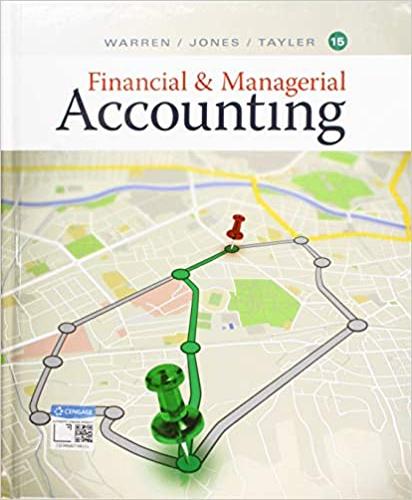a. What is an account receivable? What other names does this asset go by? b. How do accounts receivable differ from notes receivable? c. What is a contra account? What two contra accounts are associated with Pearson's trade receivables factors that managers might consider when deciding how to estimate the balance in each of these (sce Note 22)? What types of activities are captured in cach of these contra accounts? Describe contra accounts d. Two commonly used approaches for estimating uncollectible accounts receivable are the percentage- of-sales procedure and the aging-of-accounts procedure. Briefly describe these two approaches. What information de managers need to determine the activity and final account balance under cach approach? Which of the two approaches do you think results in a more accurate estimate of niet accounts receivable? e. If Pearson anticipates that some accounts will be uncollectible, why did the company extend credit to those customers in the first place? Discuss the risks that managers must consider with respect to accounts receivable. -109- 22. Trade and other recelvables Aline Current Trade receivables Noyalty advances Other receivables 1,284 Non-current 86 Royalty advances 2 Other receivables 2009 989 1.030 99 Prepayments and accrued income 111 75 62 121 Receivables from related parties 135 4 1.342 102 Prepayments and accrued income 24 3 47 112 152 retums. The movements on the provision for bad and doubtful debts are as follows: Tiade receivables are stated at fair value, net of provisions for bad and doubtfuldebts and anticipated future sales 2009 2008 62) 5 (18) (26) Income statement movements (27) 20 27 ) (2) Acquisition through business combination (76) 62) Concentrations of credit risk with respect to trade receivables are limited due to the Group's large number of customers, who are internationally dispersed. Al figures is on Ar beginning of year Exchange differences Utilised At end of year Du impact on a. What is an account receivable? What other names does this asset go by? b. How do accounts receivable differ from notes receivable? c. What is a contra account? What two contra accounts are associated with Pearson's trade receivables factors that managers might consider when deciding how to estimate the balance in each of these (sce Note 22)? What types of activities are captured in cach of these contra accounts? Describe contra accounts d. Two commonly used approaches for estimating uncollectible accounts receivable are the percentage- of-sales procedure and the aging-of-accounts procedure. Briefly describe these two approaches. What information de managers need to determine the activity and final account balance under cach approach? Which of the two approaches do you think results in a more accurate estimate of niet accounts receivable? e. If Pearson anticipates that some accounts will be uncollectible, why did the company extend credit to those customers in the first place? Discuss the risks that managers must consider with respect to accounts receivable. -109- 22. Trade and other recelvables Aline Current Trade receivables Noyalty advances Other receivables 1,284 Non-current 86 Royalty advances 2 Other receivables 2009 989 1.030 99 Prepayments and accrued income 111 75 62 121 Receivables from related parties 135 4 1.342 102 Prepayments and accrued income 24 3 47 112 152 retums. The movements on the provision for bad and doubtful debts are as follows: Tiade receivables are stated at fair value, net of provisions for bad and doubtfuldebts and anticipated future sales 2009 2008 62) 5 (18) (26) Income statement movements (27) 20 27 ) (2) Acquisition through business combination (76) 62) Concentrations of credit risk with respect to trade receivables are limited due to the Group's large number of customers, who are internationally dispersed. Al figures is on Ar beginning of year Exchange differences Utilised At end of year Du impact on








